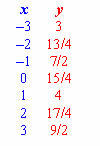Leukocytes (also called white blood cells), like red blood cells, are figurative elements of the blood. These cells are formed in the adult inside the bones, in the red bone marrow. There are about 5,000 to 10,000 white blood cells per cubic millimeter of blood in an adult human.
Leukocytes have as main function to protect our body against pathogens and foreign organisms. They act by phagocytizing invading particles or producing substances that will act by destroying or inactivating these particles.
We can classify leukocytes according to the presence of granules into granulocytes and agranular. Granules are actually lysosomes, organelles specialized in intracellular digestion. These granules stain densely when subjected to traditional hematological staining.
Among the granulocytes, we can mention the neutrophils, which are the most numerous types. They have a spherical shape and a generally three-lobed core. These cells carry out phagocytosis and have the ability to leave blood vessels and penetrate tissues, thus exercising their protective function in the body. The process by which leukocytes are able to pass through the blood vessel wall and into tissues is called
diapedesis.You eosinophils they are cells that also have granules and are related to the phagocytosis of the antigen-antibody complexes. Its shape is spherical and the core is bilobed. The number of these cells is increased during responses to parasitic infections and allergic reactions.
Basophils, another granulocyte leukocyte, work by releasing histamine and heparin, substances that help in blood vessel dilation and anticoagulation, respectively. They have a spherical shape and an irregular core.
Lymphocytes are very abundant agranular cells in the blood, second only to neutrophils. Very important in the immune process, these cells are involved in the production of antibodies. Its shape is spherical and the core is large and also spherical. Lymphocytes can be divided into two types: T lymphocytes and B lymphocytes.
T lymphocytes differentiate from B lymphocytes by virtue of where differentiation occurs. T lymphocytes differentiate in the thymus, while the B lymphocyte differentiates in bone marrow.
T lymphocytes are divided into two classes: cytotoxic T lymphocyte or CD8, which acts by killing infected cells, and the T helper lymphocyte or CD4, which acts by coordinating the immune response and activating defense cells, such as B lymphocytes and macrophages. B lymphocytes differentiate into plasma cells, which have the function of producing antibodies.
Monocytes have a round or reniform nucleus and large cytoplasm. They become macrophages, cells specialized in the phagocytosis process of viruses, fungi and bacteria. Furthermore, they are responsible for destroying dead and damaged cells in the body.
The increase or decrease of white blood cells in the blood can cause some illnesses. We call leukocytosis the significant increase in white blood cells in the blood. Leukopenia, on the other hand, happens when there is a decrease in leukocyte rates, and is normally associated with viral diseases.
A disease related to leukocytes is the leukemia, a type of cancer in which there is uncontrolled production of non-differentiating and non-functional leukocytes. The type of leukemia is related to the type of leukocyte affected.
by Vanessa dos Santos
Graduated in Biology

